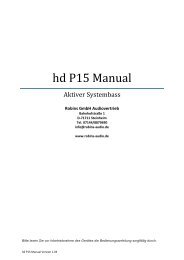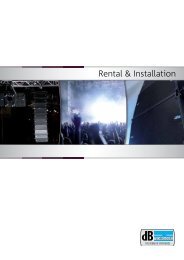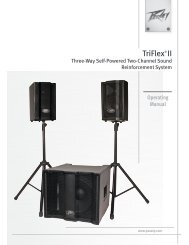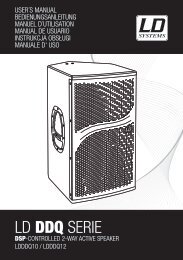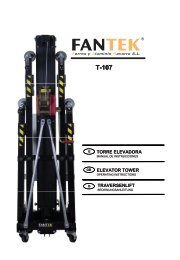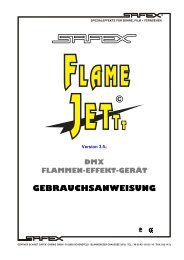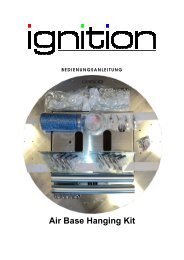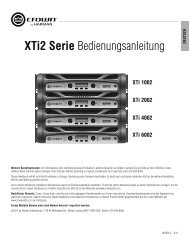You also want an ePaper? Increase the reach of your titles
YUMPU automatically turns print PDFs into web optimized ePapers that Google loves.
<strong>TORRE</strong> T-<strong>108</strong>-<strong>PA</strong>
N1<br />
N2<br />
W<br />
N1<br />
N2<br />
W<br />
N1<br />
N2<br />
W<br />
<strong>TORRE</strong> T-<strong>108</strong><br />
<strong>TORRE</strong> T-<strong>108</strong>-<strong>PA</strong><br />
J<br />
R<br />
R1<br />
S<br />
U<br />
T<br />
V<br />
F<br />
TF<br />
CA<br />
U<br />
T<br />
R<br />
S<br />
J<br />
V<br />
R1<br />
F<br />
J1<br />
N1<br />
N2<br />
W<br />
N1<br />
N2<br />
W<br />
N1<br />
N2<br />
W<br />
N1<br />
N2<br />
W<br />
<strong>TORRE</strong> T-<strong>108</strong><br />
<strong>TORRE</strong> T-<strong>108</strong>-<strong>PA</strong><br />
J<br />
R<br />
R1<br />
S<br />
U<br />
T<br />
V<br />
F<br />
J<br />
R<br />
R1<br />
S<br />
U<br />
T<br />
V<br />
F<br />
TF<br />
CA<br />
U<br />
T<br />
R<br />
S<br />
J<br />
V<br />
R1<br />
F<br />
J1
T-<strong>108</strong>/009<br />
T-<strong>108</strong>/010<br />
A<br />
T-<strong>108</strong>/011<br />
T-<strong>108</strong>/006<br />
T-<strong>108</strong>/018<br />
T-<strong>108</strong>/005<br />
T-<strong>108</strong>/007<br />
ACC/13<br />
ACC/21<br />
ACC/18<br />
T-<strong>108</strong>/013<br />
T-<strong>108</strong>/012<br />
T-<strong>108</strong>/016<br />
T-<strong>108</strong>/001<br />
T-<strong>108</strong>/014<br />
ACC/25<br />
ACC/29<br />
T-<strong>108</strong>/031<br />
T-<strong>108</strong>/004<br />
<strong>TORRE</strong> T-<strong>108</strong><br />
T-<strong>108</strong>/009<br />
T-<strong>108</strong>/010<br />
A<br />
T-<strong>108</strong>/011<br />
T-<strong>108</strong>/006<br />
T-<strong>108</strong>/018<br />
T-<strong>108</strong>/005<br />
T-<strong>108</strong>/007<br />
ACC/13<br />
ACC/21<br />
ACC/18<br />
T-<strong>108</strong>/013<br />
T-<strong>108</strong>/012<br />
T-<strong>108</strong>/016<br />
T-<strong>108</strong>/001<br />
T-<strong>108</strong>/014<br />
ACC/25<br />
ACC/29<br />
T-<strong>108</strong>/031<br />
T-<strong>108</strong>/004<br />
T-<strong>108</strong>/011<br />
T-<strong>108</strong>/006<br />
T-<strong>108</strong>/018<br />
T-<strong>108</strong>/005<br />
T-<strong>108</strong>/007<br />
ACC/13<br />
ACC/21<br />
ACC/18<br />
T-<strong>108</strong>/013<br />
T-<strong>108</strong>/012<br />
T-<strong>108</strong>/016<br />
T-<strong>108</strong>/001<br />
T-<strong>108</strong>/014<br />
ACC/25<br />
ACC/29<br />
T-<strong>108</strong>/031<br />
T-<strong>108</strong>/004<br />
<strong>TORRE</strong> T-<strong>108</strong>
T-<strong>108</strong>/009<br />
T-<strong>108</strong>/010<br />
A<br />
T-<strong>108</strong>/011<br />
T-<strong>108</strong>/006<br />
T-<strong>108</strong>/018<br />
T-<strong>108</strong>/005<br />
T-<strong>108</strong>/007<br />
ACC/13<br />
ACC/21<br />
ACC/18<br />
T-<strong>108</strong>/013<br />
T-<strong>108</strong>/012<br />
T-<strong>108</strong>/016<br />
T-<strong>108</strong>/001<br />
T-<strong>108</strong>/014<br />
ACC/25<br />
ACC/29<br />
T-<strong>108</strong>/031<br />
T-<strong>108</strong>/004<br />
T-<strong>108</strong>/034<br />
ACC/32<br />
ACC/31<br />
ACC/30<br />
<strong>TORRE</strong> T-<strong>108</strong>-<strong>PA</strong><br />
T-<strong>108</strong>/009<br />
T-<strong>108</strong>/010<br />
A<br />
T-<strong>108</strong>/011<br />
T-<strong>108</strong>/006<br />
T-<strong>108</strong>/018<br />
T-<strong>108</strong>/005<br />
T-<strong>108</strong>/007<br />
ACC/13<br />
ACC/21<br />
ACC/18<br />
T-<strong>108</strong>/013<br />
T-<strong>108</strong>/012<br />
T-<strong>108</strong>/016<br />
T-<strong>108</strong>/001<br />
T-<strong>108</strong>/014<br />
ACC/25<br />
ACC/29<br />
T-<strong>108</strong>/031<br />
T-<strong>108</strong>/004<br />
T-<strong>108</strong>/034<br />
ACC/32<br />
ACC/31<br />
ACC/30<br />
<strong>TORRE</strong> T-<strong>108</strong>-<strong>PA</strong>
T-<strong>108</strong>/017<br />
T-<strong>108</strong>/020<br />
T-<strong>108</strong>/020<br />
T-<strong>108</strong>/029<br />
T-<strong>108</strong>/033<br />
ACC/26<br />
ACC/26<br />
T-<strong>108</strong>/002<br />
T-<strong>108</strong>/026<br />
T-<strong>108</strong>/003
T-<strong>108</strong>/018<br />
T-<strong>108</strong>/032<br />
T-<strong>108</strong>/021<br />
T-<strong>108</strong>/026<br />
T-<strong>108</strong>/027<br />
T-<strong>108</strong>/022<br />
T-<strong>108</strong>/019
T-<strong>108</strong>/004<br />
T-<strong>108</strong>/028<br />
T-<strong>108</strong>/015<br />
T-<strong>108</strong>/017<br />
T-<strong>108</strong>/025
ACC/14-001<br />
A<br />
ACC/14<br />
T-117/024<br />
ACC/14-002<br />
T-117/024<br />
ACC/14-002<br />
ACC/14-003<br />
ACC/14-003
1.- Introducción.<br />
Estimados señores, con el objetivo de optimizar el uso de nuestras torres elevadoras<br />
T-<strong>108</strong> y T-<strong>108</strong>-<strong>PA</strong> hemos elaborado este manual. Le rogamos lea atentamente estas<br />
instrucciones antes de utilizar las torres.<br />
Todos nuestros productos han sido sometidos a las más exigentes pruebas y controles<br />
durante el proceso de fabricación.<br />
Para que las certificaciones incorporadas al presente manual surtan efecto se deberán<br />
emplear repuestos originales en todas las reparaciones.<br />
Para cualquier consulta sobre el producto debe indicarse el número de referencia y el<br />
año de construcción o número de serie en su defecto.<br />
2.- Datos técnicos.<br />
Torre elevadora telescópica modelo T-<strong>108</strong> y T-<strong>108</strong>-<strong>PA</strong>. Esta torre está diseñada para<br />
levantar cargas en sentido vertical a diferentes alturas seleccionables, como soporte<br />
para estructuras y aparatos de iluminación.<br />
2.1.- Carga máxima elevable: T-<strong>108</strong> de 360 Kg.<br />
T-<strong>108</strong>-<strong>PA</strong> de 350 Kg.<br />
2.2.- Carga mínima elevable de 25 Kg.<br />
2.3.- Altura máxima: T-<strong>108</strong> de 6,40 m.<br />
T-<strong>108</strong>-<strong>PA</strong> de 6,00 m.<br />
2.4.- Altura mínima: T-<strong>108</strong> de 2,00 m.<br />
T-<strong>108</strong>-<strong>PA</strong> de 2,00 m.<br />
- Altura mínima para la carga : 0,20 m.<br />
2.5.- Área de la base: T-<strong>108</strong> de 2,17 x 1,83 m.<br />
T-<strong>108</strong>-<strong>PA</strong> de 2,60 x 2,00 m.<br />
2.6.- Área de la base cerrada: 0,57 x 0,68 m.<br />
2.7.- Peso: T-<strong>108</strong> de 217 Kg.<br />
T-<strong>108</strong>-<strong>PA</strong> de 226 Kg.<br />
2.8.- Cabestrante de 1200 Kg. de carga máxima con freno automático de retención<br />
de la carga. Homologado en Dusseldorf según DIN 15020 y VBG 8 con el nº GS03015.<br />
2.9.- Cable: Acero según DIN 3060. Calidad 180 Kg./mm 2 resistente a la torsión.<br />
Diámetro del cable 6 mm.<br />
2.10.- Material de construcción: Cuerpo principal en perfil de aluminio extrusionado<br />
6082-T6. Base y patas en perfil de acero según EN 10305.<br />
2.11.- Sistema deslizante sobre rodillos de nilatron de cuatro tramos accionados por<br />
cable de acero guiado por poleas acanaladas con cojinetes de rodamiento a bolas.<br />
2.12.- Platillos estabilizadores ajustables en las patas, con apoyos antideslizantes de<br />
caucho.<br />
2.13.- Anclaje de las patas por gatillos de seguridad.
2.14.- Sistema de Seguridad Automático, (SSA).<br />
2.15.- Nivel de burbuja para ajustar la posición vertical de la torre.<br />
2.16.- Protección antióxido y acabado anodizado, también en color negro.<br />
2.17.- Dispositivo de conexión de toma a tierra, ACC/29.<br />
2.18.- Ruedas direccionales para el transporte de la torre en posición vertical y<br />
plegada hasta su emplazamiento de trabajo.
3.- Medidas de seguridad.<br />
3.1.- Colocar la torre elevadora sólo en superficies duras y planas.<br />
3.2.- Comprobar que las patas están insertadas a fondo y sujetas por los gatillos<br />
retenedores de seguridad (R).<br />
3.3.- Comprobar que la torre se encuentra en posición vertical mediante el nivel de<br />
burbuja (F) situado en el tramo base. Ajustar, si fuera necesario, con los platillos de<br />
apoyo (Q), girando la manivela (H) en el sentido adecuado, siempre manteniendo las<br />
ruedas de la base en contacto con el suelo como otro punto de apoyo.<br />
3.4.- Si se utiliza al aire libre, colocar la torre en suelo firme y asegurarla contra la fuerza<br />
del viento mediante tirantes de cable de acero. Los tirantes de cable de acero deben<br />
tener un diámetro mínimo de 6 mm y deben estar posicionados sobre el anclaje<br />
previsto para tal efecto (CA), Torre T-<strong>108</strong>-<strong>PA</strong>.<br />
3.5.- En caso de ser necesario se deberá conectar la torre a tierra a través del<br />
dispositivo de conexión habilitado para ello, ACC/29.<br />
3.6.- No usar escaleras encima de la torre ni apoyarlas en ella.<br />
3.7.- Cuidado con salientes, cables, etc. Por encima de la torre.<br />
3.8.- No ponerse debajo de la carga.<br />
3.9.- No mover la torre si está cargada o elevada.<br />
3.10.- Antes de utilizar la torre, verificar el estado del cable, éste no debe presentar<br />
rotura de hilos o aplastamiento. No usar nunca cables en malas condiciones.<br />
3.11.- No desmontar nunca la manivela del cabestrante (W), ni ningún elemento del<br />
mismo en ningún caso.<br />
3.12.- Se recomienda fijar la manivela del cabrestante una vez se disponga la torre en<br />
posición de trabajo.<br />
3.13.- La carga mínima para el funcionamiento del freno sin problemas es de 25 Kg. Sin<br />
esta carga mínima el freno no actuará.<br />
3.14.- No engrasar ni lubricar el mecanismo de freno del cabestrante.<br />
3.15.- No autorizada para elevador de personas.
4.- Instrucciones de uso.<br />
4.1.- Colocar la torre elevadora sobre una superficie plana y firme en su<br />
emplazamiento de trabajo.<br />
4.2.- Sacar las patas (P) de su soporte para transporte (S) e insertarlas a fondo en sus<br />
alojamientos de trabajo (V) comprobando que quedan sujetas por los gatillos<br />
retenedores de seguridad. (R). Las patas largas se deben disponer sobre la parte<br />
frontal y las patas cortas sobre la parte trasera.<br />
FIGURA 1<br />
Introducir las Patas<br />
Comprobar los Gatillos de Seguridad<br />
4.3.- <strong>TORRE</strong> T-<strong>108</strong>-<strong>PA</strong>. Sacar los tirantes frontales (TF) del soporte de transporte (S) y<br />
sitúelos en sus puntos de anclaje (G) de las dos patas delanteras, y sobre los puntos de<br />
anclaje (GA) de los laterales de los tramos de las torres. Una vez introducidos fíjelos<br />
mediante los pasadores de seguridad (L).<br />
FIGURA 2<br />
GA<br />
G<br />
G<br />
Posición de los anclajes de los tirantes frontales
4.4.- Ajustar la posición vertical de la torre mediante los platillos de apoyo regulables<br />
(Q) girando las manivelas (H) en el sentido necesario para lograr que la burbuja del<br />
indicador de nivel (F) quede centrada en el círculo. Hay que tener en cuenta que<br />
cuando se lleve a cabo la nivelación se deberán mantener las ruedas de transporte en<br />
contacto con el suelo como otro punto de apoyo.<br />
FIGURA 3<br />
Regulación de los Platillos
4.5.- Desbloquear el gatillo de seguridad (R1). Sacar las horquillas de carga (U)<br />
quitando los pasadores (L), y colocarlos en posición para soportar la carga. Colocar los<br />
pasadores de seguridad.<br />
FIGURA 4<br />
Desbloquear Gatillo (R1)<br />
1<br />
2<br />
2<br />
1<br />
Quitar los pasadores (L)<br />
Sacar las horquillas de carga (U)<br />
3<br />
4<br />
3<br />
4<br />
Posicionar las horquillas en posición<br />
Colocar los pasadores de seguridad
La posición de las horquillas de carga (U) en posición de cargar debe ser tal que la<br />
indicación quede en la parte superior y se de una inclinación como se muestra en la<br />
siguiente imagen.<br />
FIGURA 5<br />
Orientación correcta de la horquillas<br />
4.6.- Colocar la carga a elevar sobre las horquillas de la torre mediante un soporte<br />
adecuado según el caso, de forma que el peso de la carga solo actúe en sentido<br />
vertical. La carga deberá ser como mínimo de 25 Kg. y nunca deberá estar más<br />
desplazada de 25 cm, desde la parte trasera de las horquillas de carga.<br />
FIGURA 6<br />
25 cm<br />
25 Kg<br />
Posición de la carga<br />
La capacidad de carga máxima de la torre disminuye con la distancia de aplicación<br />
de la carga con respecto al frontal de la torre.<br />
A continuación se muestra un gráfico de las diferentes cargas máximas en función de<br />
la distancia de aplicación de la carga.
FIGURA 7<br />
A B C<br />
D<br />
Posición de la carga <strong>TORRE</strong> T-<strong>108</strong>-<strong>PA</strong><br />
Distancia del centro de la<br />
<strong>TORRE</strong><br />
Carga Máxima<br />
Elevable<br />
A 50 cm 350 kg.<br />
B 55 cm 320 kg.<br />
C 60 cm 295 kg.<br />
D 65 cm 270 kg.<br />
Tabla de cargas admisibles <strong>TORRE</strong> T-<strong>108</strong>-<strong>PA</strong><br />
4.7.- Elevación:<br />
Comprobar que la posición del Sistema de Seguridad Automático (SSA) del último<br />
tramo se encuentra liberado, Posición 1. Elevar la torre girando la manivela del<br />
cabestrante (W) en el sentido de las agujas del reloj (N1), elevando la carga hasta la<br />
altura deseada. Inicialmente se elevará el carro hasta la altura máxima del último<br />
tramo, una vez aquí el carro será retenido por el SSA del último tramo, que pasaremos<br />
a bloquear. Conforme queramos ir subiendo cada uno de los tramos, liberaremos los<br />
respectivos SSA de cada tramo. Para ello tiraremos el SSA hacia fuera y giraremos el<br />
SSA en el sentido de las agujas del reloj, tal y como se muestra en la figura 6. Una vez<br />
alcancemos la altura deseada da cada tramo iremos bloqueando los respectivos SSA.
FIGURA 8<br />
Posición 1 - SSA liberado<br />
Giro del cabrestante y elevación del<br />
carro<br />
Altura máxima del carro sobre el último<br />
tramo<br />
Bloquear SSA del último tramo<br />
Posición 2 - SSA bloqueado Liberación SSA Tramo Intermedio – Paso 1<br />
Liberación SSA Tramo Intermedio – Paso 2<br />
SSA Tramo Intermedio liberado
4.8.- Aguantar:<br />
Soltar la manivela del cabestrante (W), una vez tengamos bloqueados todos los<br />
Sistemas de Seguridad de cada tramo.<br />
FIGURA 9<br />
Posición de la torre elevada<br />
La torre puede dejarse en cualquier posición intermedia que se necesite, ajustando la<br />
altura a uno de los alojamientos del Sistema de Seguridad.<br />
Se recomienda trabar la manivela del cabestrante con una cadena para evitar la<br />
manipulación por personas ajenas.
4.9.- Descenso:<br />
La maniobra de descenso se consigue de la manera contraria. Girar la manivela del<br />
cabestrante (W) en sentido contrario a las agujas del reloj (N2) descendiendo la carga<br />
hasta que vayan bajando los diferentes tramos hasta que la torre quede<br />
completamente plegada a su altura mínima. Teniendo en cuenta de mantener sujeto<br />
cada SSA conforme se van bajando los tramos.<br />
FIGURA 10<br />
Giro del cabrestante y descenso del tramo<br />
Posición final de la operación de descenso<br />
La torre puede dejarse en cualquier posición intermedia que se necesite del mismo<br />
modo que al subir la carga.
4.10.- Para transportar la torre es necesario plegarla bajando completamente los<br />
tramos. Hay que bloquear todos los tramos con los SSA y el carro hay que fijarlo<br />
mediante el Gatillo de Seguridad (R1). Desmontar las patas liberando los gatillos de<br />
retención y colocarlas en su posición de transporte (S). Apretar los tornillos de sujeción<br />
(J).<br />
<strong>TORRE</strong> T-<strong>108</strong>-<strong>PA</strong>. Desmontar los tirantes frontales (TF) liberando los pasadores (L),<br />
posicionar los tirantes en su emplazamiento de transporte (S) y fijarlo mediante el<br />
tornillo de sujeción (J1).<br />
FIGURA 11<br />
Posición de Transporte
5.- Mantenimiento.<br />
5.1.- Comprobar periódicamente el estado del cable. Si un cable presenta rotura de<br />
hilos o aplastamiento, debe ser sustituido inmediatamente por otro nuevo. No utilizar la<br />
torre elevadora con cables en mal estado.<br />
Utilizar solamente cable de acero DIN 3060 resistente a la torsión.<br />
5.2.- La torre elevadora se suministra completamente engrasada de fábrica. No<br />
obstante, se recomienda engrasar periódicamente según el uso, la corona dentada<br />
del cabestrante, los cojinetes del árbol de accionamiento y el buje, la rosca de la<br />
manivela y los tramos.<br />
ATENCIÓN:<br />
No engrasar ni lubricar el mecanismo del freno.<br />
Los discos de freno, han sido engrasados con una grasa especial resistente al calor y la<br />
presión. No deben ser utilizados otros productos, distintos al original suministrado por la<br />
empresa, para evitar influir negativamente en el funcionamiento del freno.<br />
No es necesario engrasar los discos de freno.<br />
5.3.- La torre elevadora T-<strong>108</strong> y T-<strong>108</strong>-<strong>PA</strong>, debe ser comprobada por un experto como<br />
mínimo una vez al año de acuerdo con su utilización.<br />
5.4.- Solamente deben utilizarse piezas de repuesto originales para garantizar una<br />
continuada seguridad de uso.<br />
El usuario pierde todos los derechos de garantía, si incorpora otros repuestos que no<br />
sean originales o lleva a cabo cualquier modificación del producto.<br />
5.5.- Para solicitar cualquier pieza de repuesto debe de indicarse el número de<br />
referencia y el año de fabricación que figura en las hojas de despiece de este manual.
REF DESCRIPCION MATERIAL ACABADO<br />
T-<strong>108</strong>/001 Base <strong>108</strong> Acero Zincado / Negro<br />
T-<strong>108</strong>/002 Carro Acero Zincado / Negro<br />
T-<strong>108</strong>/003 Carro Aluminio Aluminio Aluminio / Negro<br />
T-<strong>108</strong>/004 Sistema Seguridad Automático Aluminio-Latón Aluminio<br />
T-<strong>108</strong>/005 Cable 6mm Acero-Nylon Galvanizado<br />
T-<strong>108</strong>/006 Cabrestante 1200 Kg Acero Zincado<br />
T-<strong>108</strong>/007 Tirante Acero Galvanizado / Negro<br />
T-<strong>108</strong>/008 Nivel Base Plástico Verde<br />
T-<strong>108</strong>/009 Pata corta Acero Zincado / Negro<br />
T-<strong>108</strong>/010 Pata larga Acero Zincado / Negro<br />
T-<strong>108</strong>/011 Tramo 1 Aluminio Aluminio / Negro<br />
T-<strong>108</strong>/012 Tramo 2 Aluminio Aluminio / Negro<br />
T-<strong>108</strong>/013 Tramo 3 Aluminio Aluminio / Negro<br />
T-<strong>108</strong>/014 Tramo 4 Aluminio Aluminio / Negro<br />
T-<strong>108</strong>/015 Plancha Cabestrante Acero Acero<br />
T-<strong>108</strong>/016 Rueda Base Goma Negro<br />
T-<strong>108</strong>/017 Polea interior 95 Acero Zincado<br />
T-<strong>108</strong>/018 Portapolea tramo base Acero Zincado<br />
T-<strong>108</strong>/019 Portapolea intermedio Acero Zincado<br />
T-<strong>108</strong>/020 Pletina sujetacable Acero Zincado / Negro<br />
T-<strong>108</strong>/021 Polea nylon Nylatron Nylatron<br />
T-<strong>108</strong>/022 Juego tornillo polea nylon Acero Zincado<br />
T-<strong>108</strong>/023 Tapon Nylon Nylon Blanco<br />
T-<strong>108</strong>/024 Usillopata Zamak Zamak<br />
T-<strong>108</strong>/025 Cuña + Tornillo Plástico Blanco<br />
T-<strong>108</strong>/026 Tornillo Carro + Tuerca Acero Zincado<br />
T-<strong>108</strong>/027 Pasador 10 + R Acero Zincado<br />
T-<strong>108</strong>/028 Cubrepolea Acero Zincado<br />
T-<strong>108</strong>/029 Juego tornillo M12 + Tuerca Polea Acero Zincado<br />
T-<strong>108</strong>/030 Tornillo Base M10 + Tuerca Acero Zincado<br />
T-<strong>108</strong>/031 Rueda pata Goma Negro<br />
T-<strong>108</strong>/032 Tornillo polea hierro Acero Zincado<br />
T-<strong>108</strong>/033 Gatillo Seguridad Carro Acero Zincado<br />
T-<strong>108</strong>/034 Tirante Frontal Acero Zincado<br />
ACC/13 Gatillo seguridad Hexagonal Acero Zincado<br />
ACC/14 Estabilizador completo M20 Acero Zincado<br />
ACC/14-001 Maneta estabilizadora Acero Zincado<br />
ACC/14-002 Perno roscado M20 Acero Zincado<br />
ACC/14-003 Plato estabilizador Acero-Caucho Zincado<br />
ACC/18 Portapatas <strong>108</strong> Acero Zincado / Negro<br />
ACC/21 Pomo para portapata Acero-Plástico Zincado / Negro<br />
ACC/26 Cuernos <strong>108</strong> Acero Zincado<br />
ACC/29 Dispositivo Toma Tierra Grande Acero Zincado<br />
ACC/30 Polea sujeción cable tirante Acero Zincado / Negro<br />
ACC/31 Plancha Anclaje tirante frontal Acero Zincado / Negro<br />
ACC/32 Tornillo de Ajuste Transporte Acero Zincado
1.- Introduction.<br />
Dear gentlemen, with the objective to optimize use of our lifting tower T-<strong>108</strong> and T-<strong>108</strong>-<br />
<strong>PA</strong> we have written out this manual.We beg you read attentively these directions<br />
before making use of the tower.<br />
All our products have been submitted to the more exigent tests and controls in the<br />
process of fabrication.<br />
In order that the certifications incorporated to the present manual take effect they will<br />
have to use original spare parts in all the reparations.<br />
The reference number and the year of the construction or serial number must be<br />
indicated in order to any consultation on the product.<br />
2.- Technical data.<br />
Lifting telescopic tower model T-<strong>108</strong> and T-<strong>108</strong>-<strong>PA</strong>. This tower is designed in order to lift<br />
up loads in vertical sense to different heights, as support for structures and gadgetry of<br />
illumination.<br />
2.1.- Max. load: T-<strong>108</strong> de 360 Kg.<br />
T-<strong>108</strong>-<strong>PA</strong> de 350 Kg.<br />
2.2.- Min. load: 25 kg.<br />
2.3.- Max. height: T-<strong>108</strong> de 6,40 m.<br />
T-<strong>108</strong>-<strong>PA</strong> de 6,00 m.<br />
2.4.- Min. height: T-<strong>108</strong> de 2,00 m.<br />
T-<strong>108</strong>-<strong>PA</strong> de 2,00 m.<br />
- Minimal height for the load. 0,20 m.<br />
2.5.- Base area: T-<strong>108</strong> de 2,17 x 1,83 m.<br />
T-<strong>108</strong>-<strong>PA</strong> de 2,60 x 2,00 m.<br />
2.6.- Folded base area: 0,57 x 0,68 m.<br />
2.7.- Weight: T-<strong>108</strong> de 217 Kg.<br />
T-<strong>108</strong>-<strong>PA</strong> de 226 Kg.<br />
2.8.- Winch: 1200 kg. maximum load with automatic brake to stop the load. Certified in<br />
Düsseldorf according to DIN 15020 and VBG 8 with the number GS03015.<br />
2.9.- Cable: Steel DIN 3060. Quality 180 kg/mm 2 . Twisting – resistant. 6 mm cable<br />
diameter.<br />
2.10.- Construction material: Principal body aluminum profiles 6082-T6. Base and legs<br />
steel profiles EN 10305.<br />
2.11.- Sliding system on nilatron rollers five profiles operated by steel cable guided by<br />
pulleys grooved with pads of bearing balls.<br />
2.12.- Stabilizing adjustable plates in the legs with nonslip supports of rubber.<br />
2.13.- Anchorage of the legs by security triggers (R).<br />
2.14.- Automatic Security System (SSA).
2.15.- Bubble’s level to adjust tower's vertical position.<br />
2.16.- Antirust protection and anodized.<br />
2.17.- Ground connection device, ACC/29.<br />
2.18.-Wheels for transport of the tower in vertical position and folded until its location of<br />
work.<br />
3.- Safety precautions.<br />
3.1.- Placing the tower only upon hard and flat surfaces.<br />
3.2.- Check that the legs are inserted in depth and secure by the retaining security<br />
triggers (R).<br />
3.3.- Check that the tower is in vertical position through the bubble’s level (F) placed at<br />
the base profile. Adjust, if it is needed, with the plates (Q), turning the handle (H) in the<br />
appropriate sense, always keeping the wheels of the base in touch with the ground as<br />
another supporting point.<br />
3.4.- If it is used out in the open, place the tower in hard ground and secure it against<br />
wind force by means of steel cable braces. The steel cable braces must have 6 mm's<br />
minimal diameter and they must be placed in the appropriated hole (CA), Tower T-<strong>108</strong>-<br />
<strong>PA</strong>.<br />
3.5.- In case of being necessary the tower will have to get connected to ground<br />
through the connecting device enabled for it, ACC/29.<br />
3.6.- Do not use stairs upon the tower neither lean them in it.<br />
3.7.- Be careful with cables, prominent objects, etc. placed above the tower.<br />
3.8.- Do not stay under the load.<br />
3.9.- Do not move the tower when it is lifted with load.<br />
3.10.- Before using the tower, verify the status of the cable, this must be free of cuts and<br />
fraying. Do not use cables bad conditions.<br />
3.11.- Do not dismount never the winch’s handle, neither any element of the winch in<br />
any case<br />
3.12.- It is suggested fixing the winch's handle once you get ready the tower in work<br />
position.<br />
3.13.- The minimum load for the working of the brake without problems is 25 Kg. The<br />
brake will not work without this minimum load.<br />
3.14.- Do not grease neither lubricate the winch's mechanism of brake.<br />
3.15.- Not approved to lift people.<br />
4.- Operating.
4.1.- Place the tower on a flat and firm surface in its site of work<br />
4.2.- Getting the legs out of its support for transport (S) and inserting them in its lodges of<br />
work (V) verifying that they are left in depth and fasten for the retaining security triggers<br />
(R). It must dispose long paws on the front part and the short paws on the rear end.<br />
SEE FIGURE 1.<br />
4.3.- TOWER T-<strong>108</strong>-<strong>PA</strong>. Getting the frontal bars (TF) out of its support for transport (S) and<br />
place them into the lock points (G) of the frontal legs and into the lock point (GA) of<br />
the tower. Once you have lock the bar fixed it using the safety bolts (L).<br />
SEE FIGURE 2.<br />
4.4.- Adjust the vertical position of the tower by means of the support plates (Q) turning<br />
the handle (H) in the required sense in order to achieve that the bubble of the level (F)<br />
become centered in the circle. It is necessary when leveling that the transporting<br />
wheels will have to keep in contact with the ground as another supporting point<br />
SEE FIGURE 3.<br />
4.5.-Unlock the security trigger (R1). Extract the loading forks (U) removing safety bolts<br />
(L), and place them in position to support the load. Place the safety bolts.<br />
SEE FIGURE 4.<br />
The position of the loading forks (U) in position to charge must be such that the<br />
indication be left in the topside and itself has a slope as is shown up in the following<br />
figure.<br />
SEE FIGURE 5.<br />
4.6.- Place the load to lift on the forks of the tower by means of a suitable support, so<br />
that the load only aperate in vertical sense. The load will have to be as minimal of 25<br />
Kg. and it will never have to be more displaced of 25 cm from the rear end of the<br />
loading forks.<br />
SEE FIGURE 6.<br />
The maxim load capacity of the tower is reduced the further away from the body the<br />
load is placed.<br />
In the Figure 7 you could see the load table of the Tower T-<strong>108</strong>-<strong>PA</strong>.<br />
SEE FIGURE 7.<br />
4.7.- Elevation:<br />
Check that the position of the Automatic Security System of the last profile is not<br />
blocked, Position 1. Lift the tower turning the winch’s handle in clockwise (N1), raising<br />
the load to the required height. At the beginning the carriage will lift until the maximum<br />
height of the last profile, then the carriage will be blocked by the Automatic Security<br />
System of the last profile, so we will block that one. As soon as we wanted to continue<br />
lifting the tower we will have to unlock the other Automatic Security Systems. In order to<br />
unlock each one we must pull out the Automatic Security System and then we turn it in<br />
clockwise, as it is shown in the figure 6. Once we reach the desired height we will block<br />
all the Automatic Security Systems.
SEE FIGURE 8.<br />
4.8.- Holaing on:<br />
Release the winch’s handle (W), once we have blocked all the automatic security<br />
systems.<br />
SEE FIGURE 9.<br />
The tower can be left in any intermediate needed position just releasing the handle,<br />
and adjusting the height to one of the placement of the automatic security system.<br />
It is recommended linking the winch’s handle with a chain to avoid the manipulation by<br />
not authorized people.<br />
4.9.- Descending:<br />
The load descending is obtained by the opposite way. Turn the winch’s handle (W) in<br />
counterclockwise (N2), Lowering the load lifting down the different profiles until the<br />
tower become completely folded to its minimal height. At the same time you must pull<br />
out the Automatic Security System of each profile meanwhile you are operating that<br />
profile.<br />
SEE FIGURE 10.<br />
The tower can be left in any intermediate needed position as in lifting.<br />
4.10.- In order to transport the tower it is necessary to fold it lifting down profiles<br />
completely. It is necessary to block all the Automatic Security Systems and the fix the<br />
carriage by means of the security trigger (R1). Dismount the legs freeing the retention<br />
triggers and place them on its transport position (S). Press the screws of fixation (J).<br />
TOWER T-<strong>108</strong>-<strong>PA</strong>. Dismount the frontal bars (TF), freeing the security bolts (L), place the<br />
bars into its support for transport (S) and fix it with the screw of fixation (J1).<br />
SEE FIGURE 11.
5.- Maintenance.<br />
5.1.- All cables have to be regularly checked. Faulty cables must be replaced<br />
immediately. Do not use the lifting tower with faulty cables. It is dangerous.<br />
Only use steel cables DIN 3060.<br />
5.2.- The tower is provided completely greased from factory. However, it is<br />
recommended greasing periodically according to the use, the crown wheel of the<br />
winch, pads of the axle of actuating and the bushing, the thread of the handle and the<br />
profiles of the tower.<br />
ATTENTION:<br />
Do not apply oil or grease to the brake mechanism.<br />
The brake discs have been pregreased with special warmth and pressure resistant<br />
grease. Another products, different to the original provided by the company, must not<br />
be used, to avoid to influence negatively the working of the winch’s brake,<br />
It is not necessary greasing the brake discs.<br />
5.3.- The lifting tower T-<strong>108</strong> and T-<strong>108</strong>-<strong>PA</strong> must be inspected by specialized technicians<br />
annually at least.<br />
5.4.- It must use only original spare parts to guarantee a continued security of use.<br />
The user loses all of the rights of guaranty, if he incorporates another spare parts that<br />
they not be originals or carries to any modification of the product.<br />
5.5.- When any spare part is required, it is necessary to indicate its reference number<br />
included in the spare parts of this manual<br />
SEE TABLE 1.
DECLARACION CE DE CONFORMIDAD<br />
D. JOSE LUIS NAVARRO NAVARRO en calidad de Administrador de la empresa FERROS<br />
Y ALUMINIO NAVARRO S.L., fabricante de FABRICANTE DE ESTRUCTURAS Y ELEMENTOS<br />
DE ELEVACIÓN <strong>PA</strong>RA EL SECTOR DEL ESPECTÁCULO con domicilio social en Polígono<br />
Industrial El Boni, Camí del Port nº 3, Catarroja, Valencia, declara bajo su única<br />
responsabilidad que la máquina,<br />
MARCA: Torre T-117<br />
DESCRIPCIÓN: Torre telescópica de elevación de carga.<br />
MODELO: T-117<br />
AÑO DE CONSTRUCCIÓN: 2009<br />
PESO:<br />
117 Kg<br />
CARGA MÁXIMA ADMISIBLE: 250 kg<br />
se halla en conformidad con la Directiva de Máquinas 98/37/CE.<br />
que en su diseño y fabricación han sido tenidos en cuenta tanto en su totalidad como<br />
parcialmente, los aspectos recogidos en las normas armonizadas siguientes:<br />
UNE EN ISO 12100 – 1:2004 “Seguridad de las máquinas. Conceptos básicos, principios<br />
generales para el diseño. Parte 1: Terminología básica, metodología”<br />
UNE EN ISO 12100 – 2:2004 “Seguridad de las máquinas. Conceptos básicos. Principios<br />
generales para el diseño. Parte 2: Principios y especificaciones técnicas”<br />
cumpliendo también las normas nacionales alemanas:<br />
BGV C1 (GUV/VC1) / BGG 912 (GUV-G912) con certificado de ensayo 083/2005.<br />
habiendo constituido el correspondiente expediente técnico de construcción;<br />
y para que conste a los efectos oportunos emite la presente declaración de<br />
conformidad.<br />
En Catarroja a 7 de Abril de 2009<br />
Firmado:<br />
José Luis Navarro Navarro<br />
Administrador



